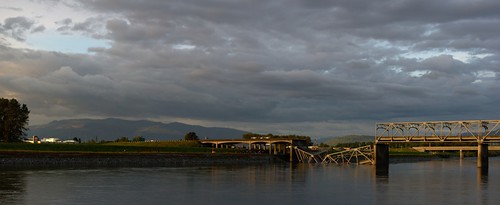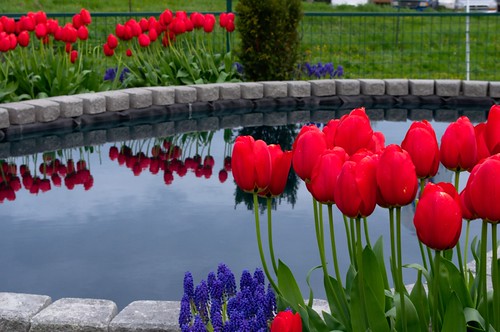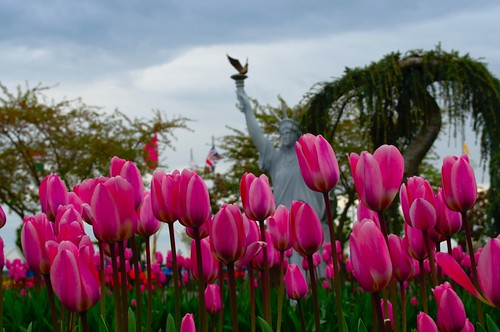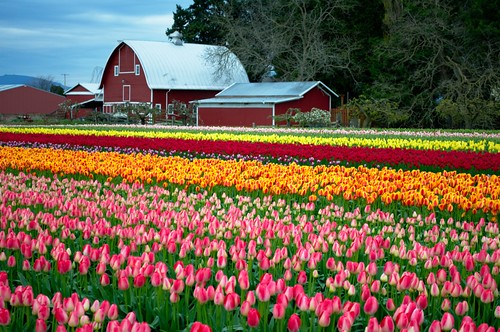Sometimes a random idea can result in a pleasant surprise. Such was the case with our Canon PowerShot SD950, which we had written off as dead last summer. The camera took a short drop and hit the hard floor of my in-laws boat. After that the camera was only half working, it would come on sometimes but most of the time was dead. A few days later the camera would not even turn on.
Well, for reason's unknown, I decided to put the battery in the camera and turn it on yesterday. And too my surprise, the camera turned on, took photos and video and is working like a charm. This made my day, as I really liked the camera and even with a DSLR the ultra-compact is nice to have available for many situations and can save wear and tear on the SLR.
Just goes to show that sometimes things are not as they might seem.
Blessings,
Jesse
My blog dedicated to my journey through the art of photography, learning, experimenting and exploring the beauty of God's creation through the viewfinder of a camera.
Tuesday, May 28, 2013
Monday, May 27, 2013
Collapsed Skagit River Bridge
There are some things you never expect to see, especially when you live in small town Skagit Valley. A collapsed bridge is definitely high on that list, but for all of us Skagit Valley residents and the 70,000+ cars a day traveling on Interstate 5 a bridge with a quarter of it collapsed and now residing in the cold waters of the river below is the surreal reality.
On Thursday, May 23rd an over-height truck struck the overhead trusses of the I-5 bridge over the Skagit River, causing a section of the bridge to collapse. My wife and I were heading north to look at a house and were on the bridge about an hour an 40 minutes prior to the accident. We were on our way home about a half hour after the incident and saw first hand from the parallel bridge the aftermath and cause of the traffic mess we were in.
On Saturday, I took some time to take some photos from the nearby levee of the scene you never expect to see in person.
The bridge has become something of a local tourist attraction for locals and not so locals alike. Typically during the month April and the annual Tulip Festival we will have people stop and ask gave directions to the Tulip fields, and the other day while on a walk my wife and I had someone stop and ask how to get to the bridge for a visual vantage point.
Thank God this wasn't worse and no one died, hopefully they will get it repaired or replaced in a timely manner as the traffic is going to be a major issue until there is a new (or repaired) bridge.
Blessings,
Jesse
On Thursday, May 23rd an over-height truck struck the overhead trusses of the I-5 bridge over the Skagit River, causing a section of the bridge to collapse. My wife and I were heading north to look at a house and were on the bridge about an hour an 40 minutes prior to the accident. We were on our way home about a half hour after the incident and saw first hand from the parallel bridge the aftermath and cause of the traffic mess we were in.
On Saturday, I took some time to take some photos from the nearby levee of the scene you never expect to see in person.
 |
| Panoramic of the entire bridge |
 |
| Vertical Panoramic of part of the bridge |
 |
| Zoomed in panoramic of the collapsed section |
The bridge has become something of a local tourist attraction for locals and not so locals alike. Typically during the month April and the annual Tulip Festival we will have people stop and ask gave directions to the Tulip fields, and the other day while on a walk my wife and I had someone stop and ask how to get to the bridge for a visual vantage point.
Thank God this wasn't worse and no one died, hopefully they will get it repaired or replaced in a timely manner as the traffic is going to be a major issue until there is a new (or repaired) bridge.
Blessings,
Jesse
Wednesday, May 22, 2013
Removing The Sunny Day Haze
Nothing like a bright sunny day to get you outside, especially come spring time when the daylight hours begin to last longer and the cold chill of winter starts its slow retreat to make way for the long awaited summer warmth.
While a nice break from winter weather, the bright sun poses some definite challenges for photography, with one being the bright hazy and washed out look that ends up in many photos. This can be be fixed with some digital development if the image isn't too washed out. I have had some good luck fixing the haze with The GIMP program and below have the general outline of my steps, though with this particular demo image my results weren't worth much as it was quite hazy.
First here is the original photo, nothing spectacular - just a view from a local observatory that came out hazy and washed out looking:
 |
| Original Photo |
For images that have some unwanted haze, but aren't too far glazed over below are my steps I typically use in The GIMP program that I have had some luck using to eliminate much of the haze and improve the photo:
Optionally, warm the color tones up slightly (as I mentioned in a previous post)
Step 1: Adjust brightness (down 10-30 points or so) and contrast (up 5-10 points or what looks appropriate)
Step 2: Adjust levels down to .95 - .85 from the 1.0 default middle option (again, this varies with the photo and level of haze)
Step 3: Adjust curves in a manner similar to the below screen shot, pulling the lower left curve down slightly and the upper right up slightly - adjusting as needed for the particular image.
Working with a RAW image is where we can really get some great results on images that may appear to be throw aways. Some we will be able to get great shots from and some may only be turned from a discard into merely a decent image.
Using Darktable, follow the below steps as a template to bring out the potential in your hazy sunny day images:
1: Exposure adjustment - boost the black slider slightly (toward the right) and leave the exposure adjustment alone.
2: Local Contrast - boost contrast and detail slightly (to the right)
3: Levels - Adjust the middle bar slightly to the right.
Three quick steps and below is the final result:
 |
| Darktable Adjusted Final |
The more I work with Darktable to develop RAW images, the more I see the advantages to the RAW format. The results are often much better, even if the only adjustments are the base curve and sharpening the program applies upon import and the extra development time is very minimal.
Anyway, there you have it: a good starting point to help bring out some pop to an image otherwise destined for the discard pile. Happy developing!
Blessings,
Jesse
Tuesday, May 21, 2013
2013 Tulip Field Photos
May is coming to a close and the local Tulip festival that concluded at the end of April seems like ancient history. And while many plants are still in bloom, the tulips prefer colder weather and have all either been topped by bulb producers or have lost their petals naturally.
Tulips make fantastic photos every year, and this year I really only had a brief window for photos. With a nine month old, schedules revolve around the little one and my wife and I were just able to make the locals night at one of the local tulip fields toward the end of the evening. It was a cooler and cloudy evening but it was my one shot for tulip photos this year.
More photos next season, stay tuned.
Blessings,
Jesse
Tulips make fantastic photos every year, and this year I really only had a brief window for photos. With a nine month old, schedules revolve around the little one and my wife and I were just able to make the locals night at one of the local tulip fields toward the end of the evening. It was a cooler and cloudy evening but it was my one shot for tulip photos this year.
 |
| Tulip Reflections |
 |
| Pink Tulips and Lady Liberty |
 |
| Tulips and the Barn at Tulip Town |
 |
| Red Tulips at Tulip Town |
More photos next season, stay tuned.
Blessings,
Jesse
Saturday, May 4, 2013
A Quick Adjustment To Improve Your Digital Photos
From my experience, digital cameras are notorious for rendering photos with color temperatures on the colder side - especially if you use auto white balance. This isn't to say that every photo you take with a digital camera will look like it was taken in the coldest winter in the arctic circle, but the image may not look as inviting as it did when taken when a steely gray/blue cast permeates the scene.
This can be addressed with a quick and simple color balance adjustment to warm up the color tones. Using The GIMP program (free, open source and available cross-platform) simply go to the colors menu and then choose color balance. You will be greeted with which ranges to adjust and three adjustment sliders: Cyan/Red, Magenta/Green and Yellow/Blue.
For most images you don't need to do much, a simple +5 on the Cyan/Red scale and a -5 on the Yellow/Blue scale done with the Midtones option selected is just enough to do the trick.
For illustrative purposes I have an old photo taken of my old cat with my first decent digital camera, a Minolta Dimage S304. The first image is the untouched photo from the camera, followed by one done on Midtones only with a +10, 0, -10 on the scales and the last one with a +5, 0, -5 adjustment done all all three range adjustments.
As you can see, it doesn't take much to positively change the final image. And if you are new to digital development, this is a great place to start that will improve many photos all the while not being difficult.
Blessings,
Jesse
This can be addressed with a quick and simple color balance adjustment to warm up the color tones. Using The GIMP program (free, open source and available cross-platform) simply go to the colors menu and then choose color balance. You will be greeted with which ranges to adjust and three adjustment sliders: Cyan/Red, Magenta/Green and Yellow/Blue.
For most images you don't need to do much, a simple +5 on the Cyan/Red scale and a -5 on the Yellow/Blue scale done with the Midtones option selected is just enough to do the trick.
For illustrative purposes I have an old photo taken of my old cat with my first decent digital camera, a Minolta Dimage S304. The first image is the untouched photo from the camera, followed by one done on Midtones only with a +10, 0, -10 on the scales and the last one with a +5, 0, -5 adjustment done all all three range adjustments.
 |
| Original |
 |
| +10, 0, -10 - Midtones Only |
 |
| +5, 0, -5 Shadows, Midtones and Highlights |
As you can see, it doesn't take much to positively change the final image. And if you are new to digital development, this is a great place to start that will improve many photos all the while not being difficult.
Blessings,
Jesse
Subscribe to:
Posts (Atom)

